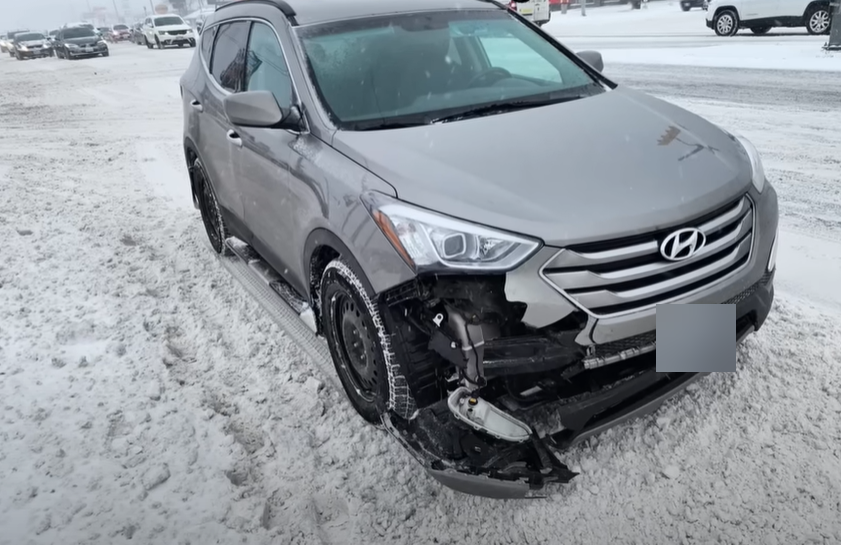
Whats the best winter tires? As the mercury dips and snow begins to blanket the roads, the annual challenge of navigating treacherous winter terrain comes into sharp focus for Canadian drivers. Finding the best winter tires becomes essential for safety and performance. Picture this: icy roads, swirling snowdrifts, and that uneasy feeling when your car starts to slide. Luckily, the best winter tires can transform this daunting experience into a manageable drive, akin to having a reliable friend by your side.
The best winter tires are not merely a seasonal gimmick—they’re a crucial component of safe driving in cold climates. Designed to perform in harsh conditions, these tires offer enhanced traction, grip, and durability. Making them indispensable for conquering icy roads, packed snow, and slushy streets. Not all winter tires earn the title of “best”; like a gourmet meal compared to a microwave dinner, their quality ranges from exceptional to barely adequate.
This article delves into the differences between the best winter tires, medium-quality options, and mediocre choices. We’ll offer insights to help you make an informed decision when gearing up for winter. We also look at tire technology, demystify the language of tread patterns, and illustrate these differences with real-world scenarios. You’ll understand what sets the best tires apart and which mid-range models offer decent performance. You’ll also gain clarity why some budget options might leave you slipping and sliding, you’ll be prepared to choose the best winter tires for your vehicle and peace of mind.
What Defines the Best Winter Tire?
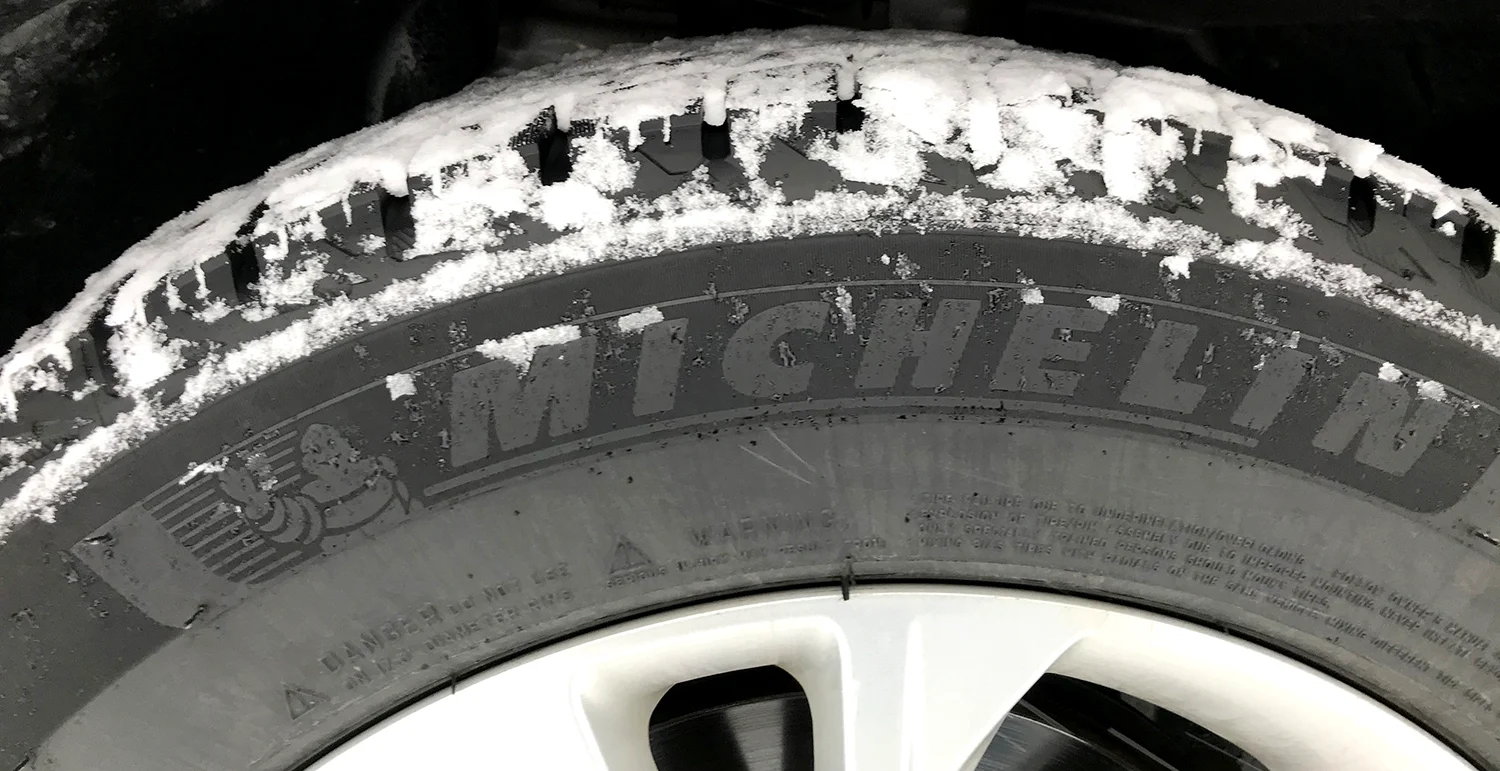
When it comes to braving the frigid elements, the best winter tires are as essential to your car as a down parka is to your wardrobe. But what exactly sets these top-tier tires apart from the rest? Let’s delve into the features that define the best winter tires and why they’re worth every penny.
Advanced Tread Compound
At the core of a tire’s superior winter performance is its tread compound. The best winter tires are crafted from advanced rubber compounds that remain flexible even as temperatures plummet. This flexibility ensures the tire maintains its grip on icy surfaces, rather than becoming stiff and brittle. For instance, the Michelin X-Ice XI3 uses a special silica-based compound that enhances elasticity, providing exceptional traction on ice and snow.
Superior Traction and Grip
Traction and grip are critical for safe winter driving. The best winter tires offer exceptional traction and grip through their specialized tread patterns and high-density sipes. These features create numerous biting edges and channels that efficiently manage snow and water displacement, ensuring stability. The Bridgestone Blizzak WS90, for example, boasts a multi-cell compound with a unique design that excels at gripping icy surfaces and ejecting packed snow.
Performance Metrics and Testing
The best winter tires consistently earn top marks in performance tests, showcasing their capabilities in challenging conditions. Independent testing organizations evaluate them based on criteria like handling in snow and ice, braking distance, and cornering stability. Models like those from Michelin and Bridgestone typically lead these tests, offering data-driven assurance of their superior quality and effectiveness.
Value Analysis
When considering the best winter tires, it’s crucial to understand their long-term value proposition. The Michelin X-Ice Xi3 and Bridgestone Blizzak WS90 often come with a heftier price tag. But they deliver significant value through unparalleled safety and performance.
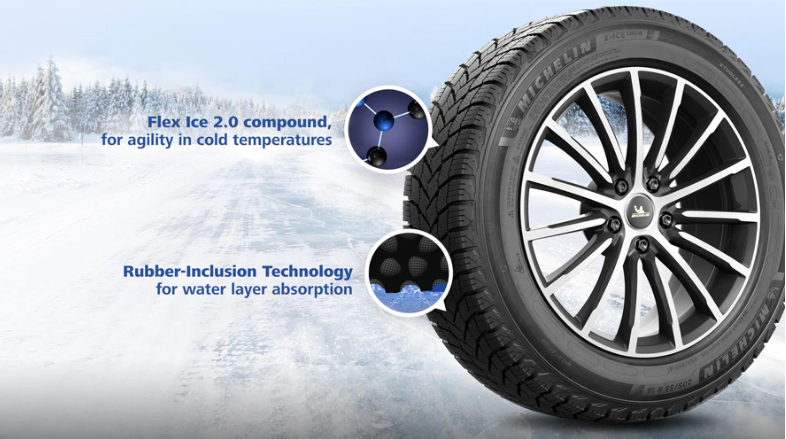
Let’s start with the Michelin X-Ice Xi3, a favorite among winter tire enthusiasts. Its advanced silica-based tread compound provides top-notch flexibility, ensuring it grips icy roads adeptly. Additionally, its proprietary MaxTouch Construction optimizes tire contact with the road. This leads to even tread wear and an impressive lifespan. Drivers often find that investing in this model prevents accidents and saves on repair costs. It also saves on insurance rates due to its dependability and efficiency.
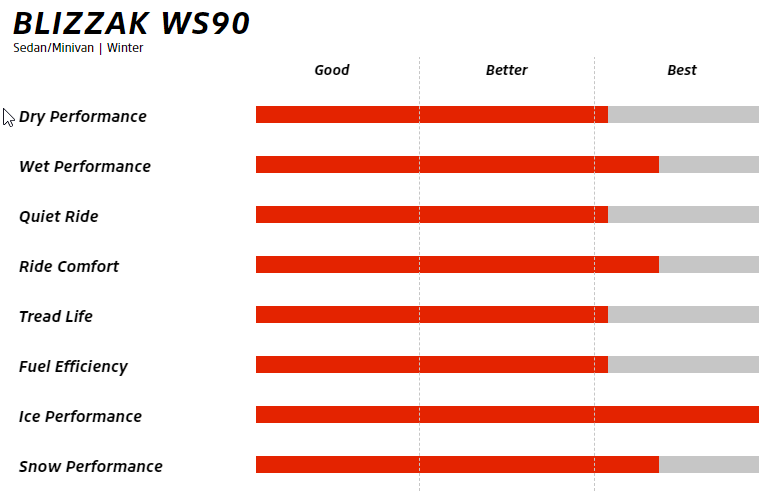
Then there’s the Bridgestone Blizzak WS90, a standout for those navigating severe winter conditions. Its Multi-Cell compound incorporates numerous microscopic pores that channel water away and maintain traction on ice. The EdgePerformance Technology Package enhances its biting edges for extra stopping power. This blend of features translates to superior road handling during harsh winters. And that, in turn, makes the Blizzak WS90 an excellent investment over its lifetime.
Expert Insights
Industry professionals and automotive safety specialists continuously advocate for selecting the best winter tires. And the choice often falls on the likes of the Michelin X-Ice Xi3 and Bridgestone Blizzak WS90. Their informed analyses highlight how these models incorporate technological advancements and significant safety features.
The Michelin X-Ice Xi3 is praised for its ability to maintain elasticity in freezing temperatures. And this is critical for traction and control. Experts underscore its low rolling resistance, which improves fuel efficiency—an added economic benefit. This model’s longevity and consistent performance across varied winter conditions secure its place as a top choice among professionals.
Equally acclaimed is the Bridgestone Blizzak WS90. Its multi-cell compound is a technological marvel. It ensures unparalleled grip on ice and wet surfaces. Industry specialists emphasize its superior braking performance, crucial for avoiding accidents in sudden weather changes.
By choosing these top-of-the-line winter tires, you align with expert recommendations, ensuring safer and more reliable winter driving. Their advanced features equip your vehicle to handle every snowy curve and icy slope with ease and confidence.
Real-World Scenarios
Navigating through winter’s challenges requires more than just skill. It requires the right equipment, especially when dealing with Quebec’s notoriously tough winter conditions. Here’s how the best winter tires prove their worth across five specific scenarios:
Scenario 1: Steep, Icy Hills – Camilien-Houde Way, Montreal

Consider the anxiety of approaching Camilien-Houde Way in Montreal. What avaits you is a steep and winding road notorious for its icy conditions during winter. The best winter tires, like the Michelin X-Ice Xi3 or Bridgestone Blizzak WS90, grip the surface with confidence, ensuring a stable ascent or descent on this treacherous incline. In contrast, subpar tires might leave you sliding uncontrollably, risking an accident on this well-traveled route.
Scenario 2: Slushy City Streets – Rue Sainte-Catherine, Montreal
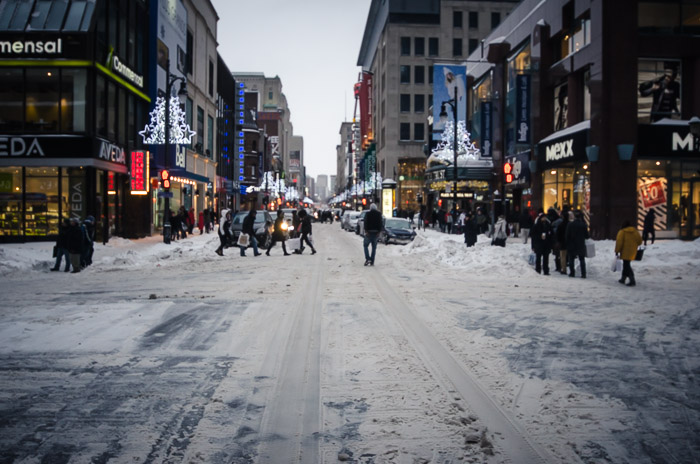
Picture your daily commute along Rue Sainte-Catherine, bustling with traffic and often covered in winter slush. Here, premium winter tires earn their stripes by efficiently channeling away water and slush. Tires such as the Blizzak WS90, with its advanced tread design, prevent hydroplaning and ensure your car remains steady. Without these features, you might find yourself weaving unpredictably, struggling to manage the road’s slick surface.
Scenario 3: Packed Snow on Rural Roads – Route 138, Charlevoix
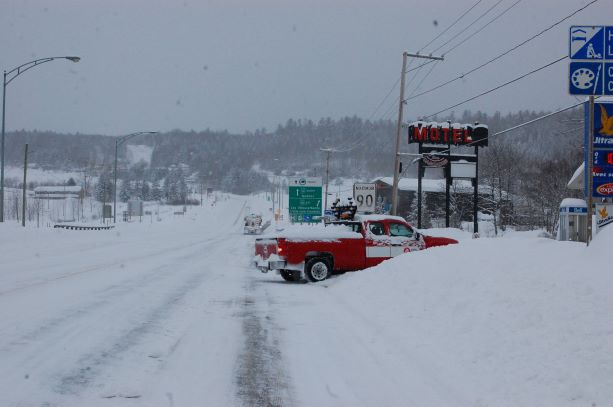
Imagine a winter weekend getaway along Route 138 in Charlevoix. Here, snow-clearing is less frequent, leaving roads packed with snow. The Michelin X-Ice Xi3 excels in these conditions. With its biting edges and high-density sipes it cuts through the snow, allowing confident driving. Lesser tires might struggle here, causing you to become stuck and waste fuel while spinning futilely.
Scenario 4: Black Ice and blowing snow on Highways 40,West Island and 640
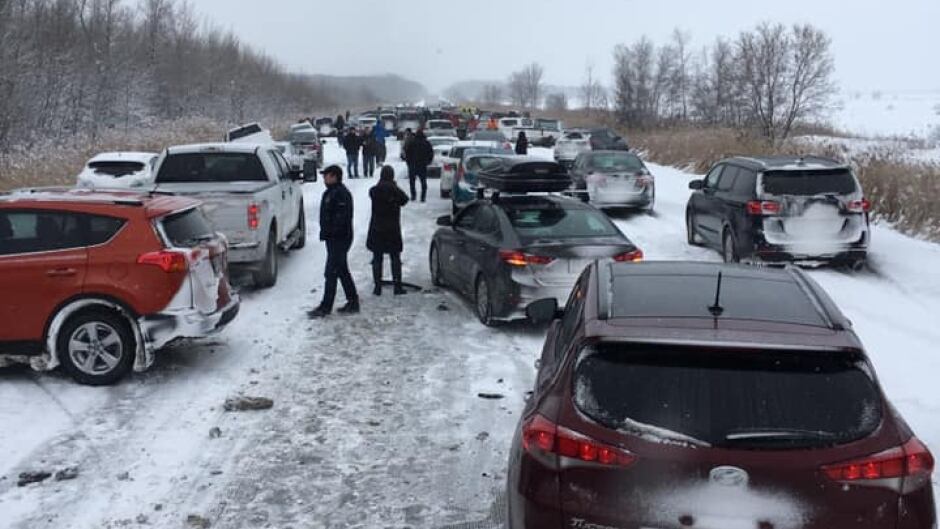
Encountering black ice on Highway 40, a major corridor through the West Island of Montreal, presents a common winter driving hazard such as this one, reported by CBC.ca. This corner of Quebec is especially treacherous at busy highway entry and exit points such as Boulevard Saint-Jean, Saint-Charles Boulevard, and Boulevard des Sources. The advanced compound and multi-cell technology of the Bridgestone Blizzak WS90 are designed to grip invisible ice patches. This helps maintain control and avoid potentially dangerous skids.Without these sophisticated tires, black ice could quickly turn your commute into a perilous ordeal.
Scenario 5: Emergency Braking in Snowy Conditions – Boulevard Saint-Jean, Pointe-Claire
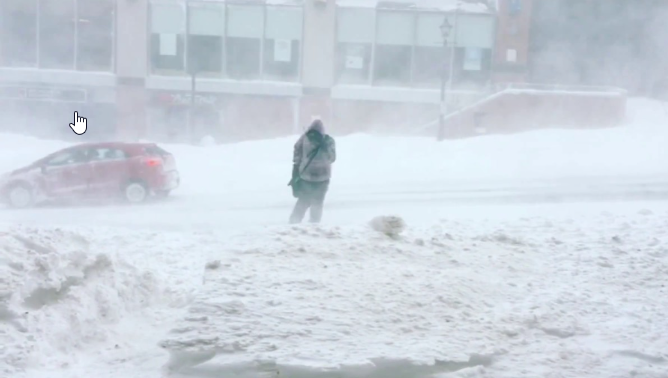
Imagine needing to stop suddenly on Boulevard Saint-Jean at the crossroad with Brunswick Boulevard. This bustling intersection provides access to Costco, Fairview Shopping Centre, Brunswick Medical Centre, and various smaller outlets at Les Colonnades to the north. This road is often blanketed in snow during the winter months, especially when snow removal trucks have yet to clear these vital thoroughfares. This makes the stopping power of the best winter tires critical. The Michelin X-Ice Xi3’s optimal contact patch allows your vehicle to stop quickly and controllably, significantly reducing the risk of a collision. In contrast, mediocre tires might slide uncontrollably, failing to prevent a potentially serious accident.
In these scenarios, specific to our harsh winters in beautiful Quebec, the best winter tires do more than just ensure safety. They transform potentially hazardous journeys into manageable drives. They are your trusted allies against the winter’s unpredictable challenges, providing peace of mind no matter where the road leads.
To know which winter tire is best for you, consider calling, visiting or making an appointment with Autotech Performance Tire Shop, where our extensive selection and expert guidance can help you find the perfect tire solution tailored to your needs. Don’t let the winter catch you off guard—equip your vehicle with tires that provide peace of mind and protect both you and your loved ones on every journey. Good grip!
Best Winter Tires Guide | Part 1
Premium Winter Tires Guide | Part 2
Your Guide for Superior Winter Tires| Part 3



